Fiido Air review: Beauty, brains, and a blunder in display tech
If you’re after style and performance in one package, the Air might still be for you, provided you’re willing to overlook its clunky digital compromises.
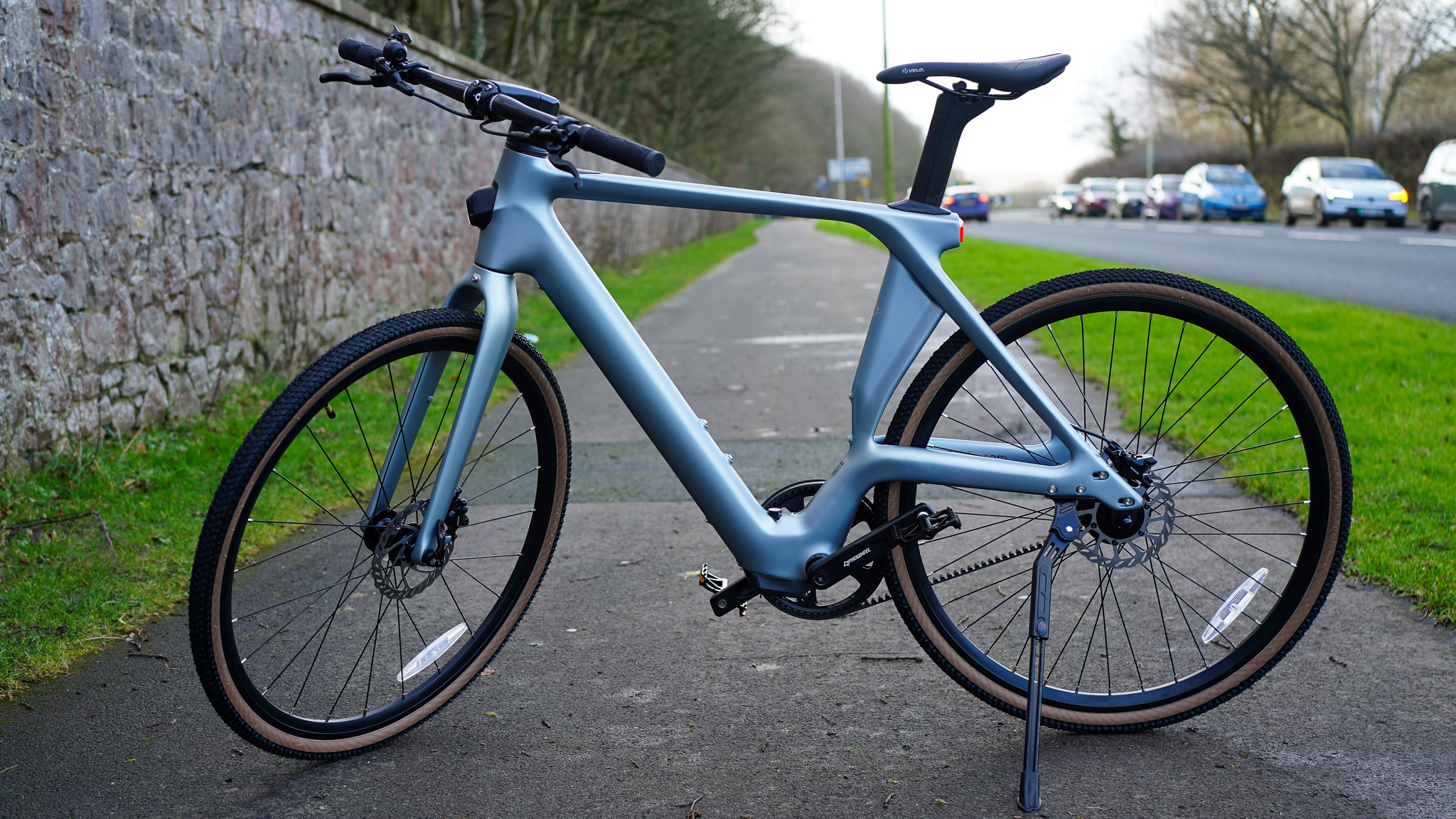
Fiido Air impresses with its featherlight, minimalist design and agile ride, making it a perfect urban commuter. However, its radical decision to ditch a built-in display for a clunky smartwatch integration mars the experience. A few tweaks would elevate this promising ride; for now, though, it’s a stylish, tech-savvy bike with glaring usability missteps.
-
+
Minimalist, featherlight design
-
+
Smooth motor assistance
-
+
Maintenance-free belt drive
-
-
Clunky smartwatch display
-
-
Limited app control
-
-
Ambiguous battery status
Why you can trust T3

I enjoyed my time with the Fiido C21, so when the brand reached out to try its 2024 Red Dot Award winner Air model last August, I thought I might as well take this super-light electric bike out for a spin.
Weighing under 14 kilos, the Fiido Air is one of the sleekest-looking e-bikes I have tried recently. In fact, it’s so slender that it passes as a push bike from the distance. Once you take a closer look, you notice the buttons and rear hub, suggesting the Air is, in fact, an electrically-assisted two-wheeler.
The bike features quality components and sports a maintenance-free belt drive. It also has built-in lights and a lightweight carbon frame. One thing you won’t find, no matter how hard you look, is a display. The company decided to delegate this function to a smartwatch included in the box in order to maintain the sleek look of the Fiido Air.
Was it a good idea to remove the display from the bike? How does the gearless belt drive setup perform? What’s the Fiido air best for? I’ve been riding the bike for a few weeks, and I think I’ve got all the answers. Let’s get going.
Fiido Air review
Price and availability
The Fiido Air was announced in 2024 and is available to buy not at Fiido US and Fiido UK for the recommended price of $1,799 USD/ £1,636 (approx. AU$2,896). Fiido doesn’t have an Australian site, so you can’t order the Air directly from the brand there. The company mainly sells directly to customers, but a few smaller third-party retailers also seem to stock the bike. The Air comes in only one colour, which is a silvery-green shade.
Specifications
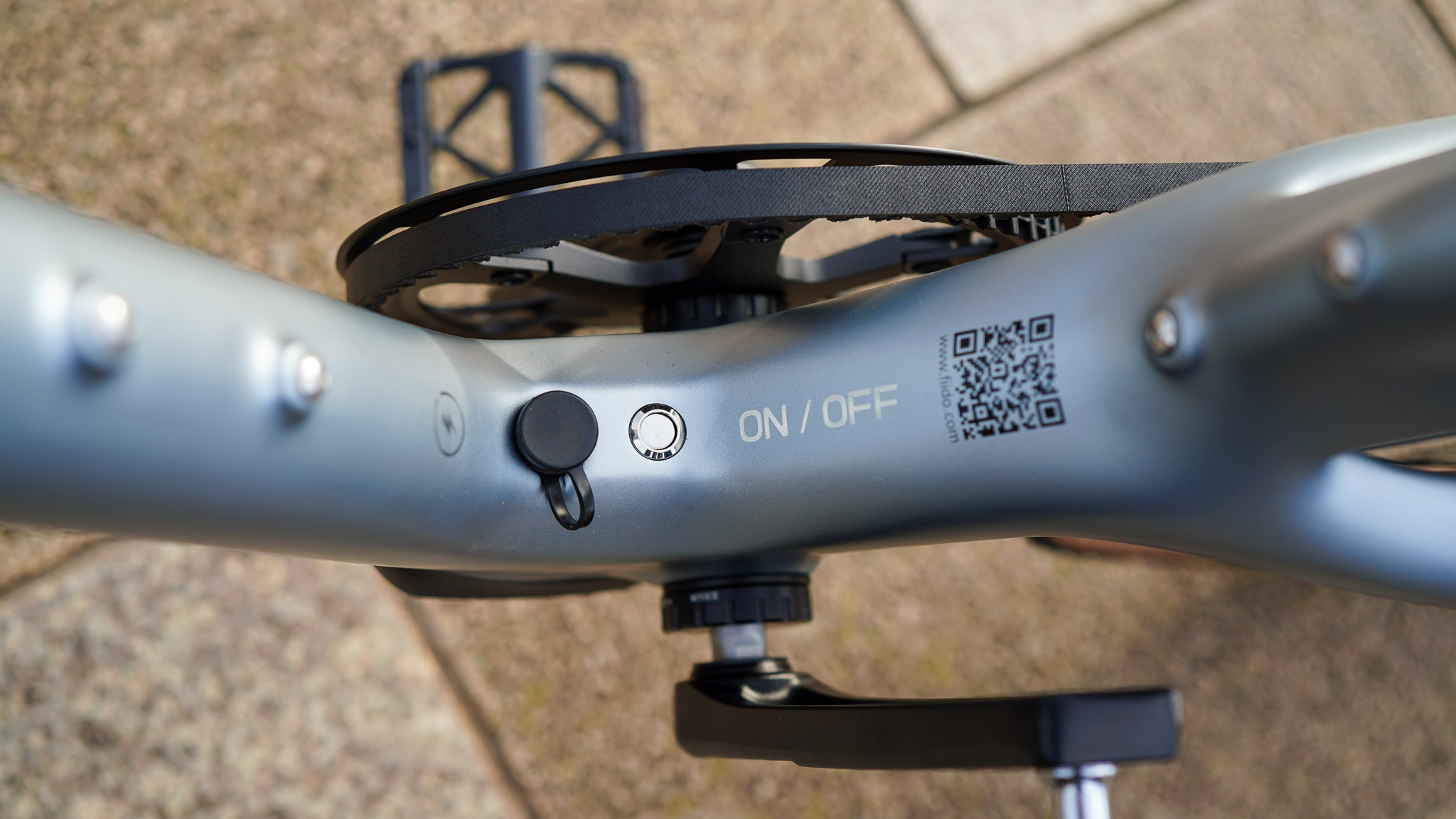
- Weight: 13.75 kg/ 30lbs (medium frame)
- Max user weight: 120 kg
- Range: up to 60km/ 37mi (in Normal mode)
- Charging time: TBC
- Breaks: Hydraulic disc brake
- Gears: 1 (belt drive)
- Peak power: 250W
Design and build quality
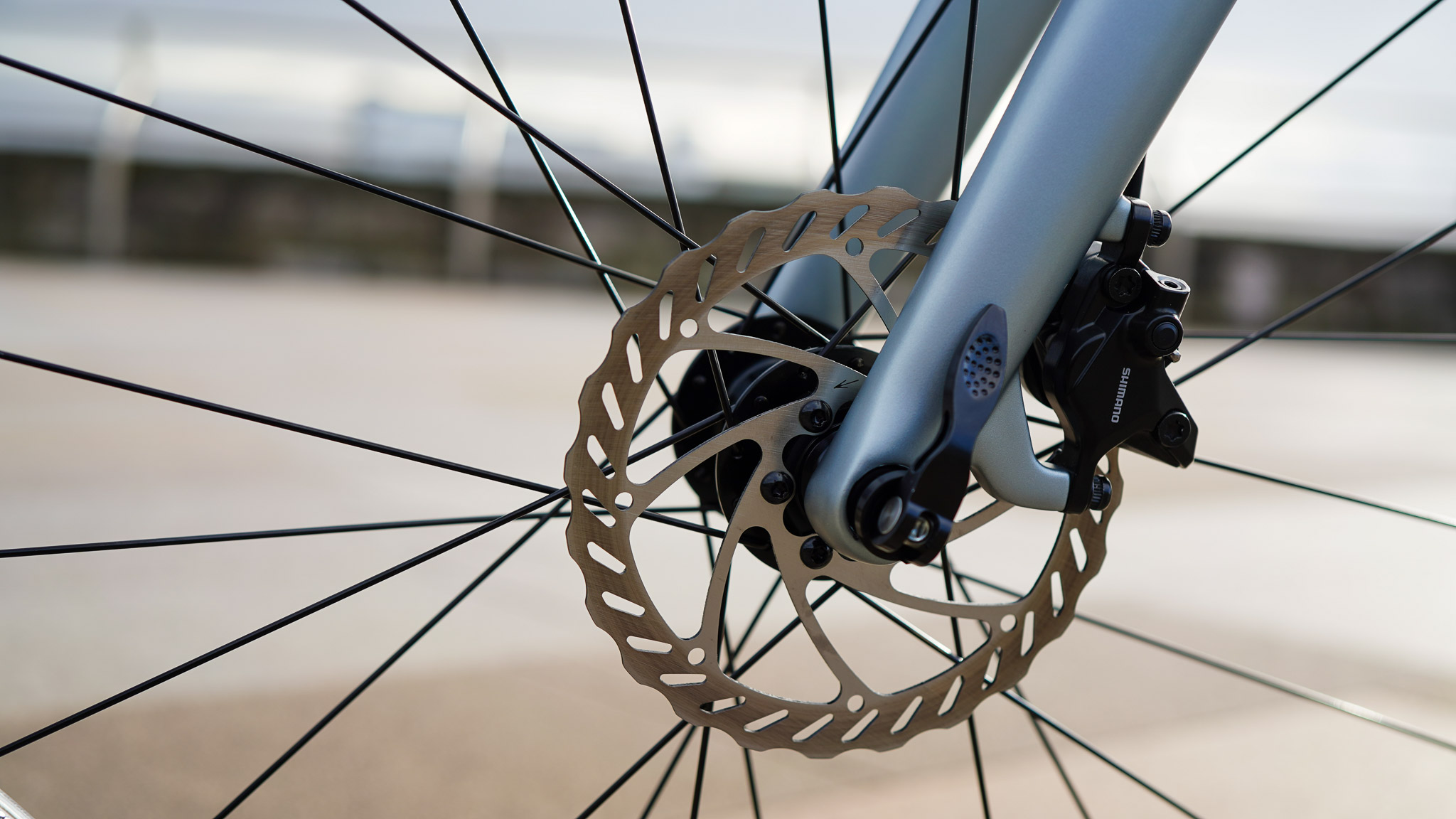
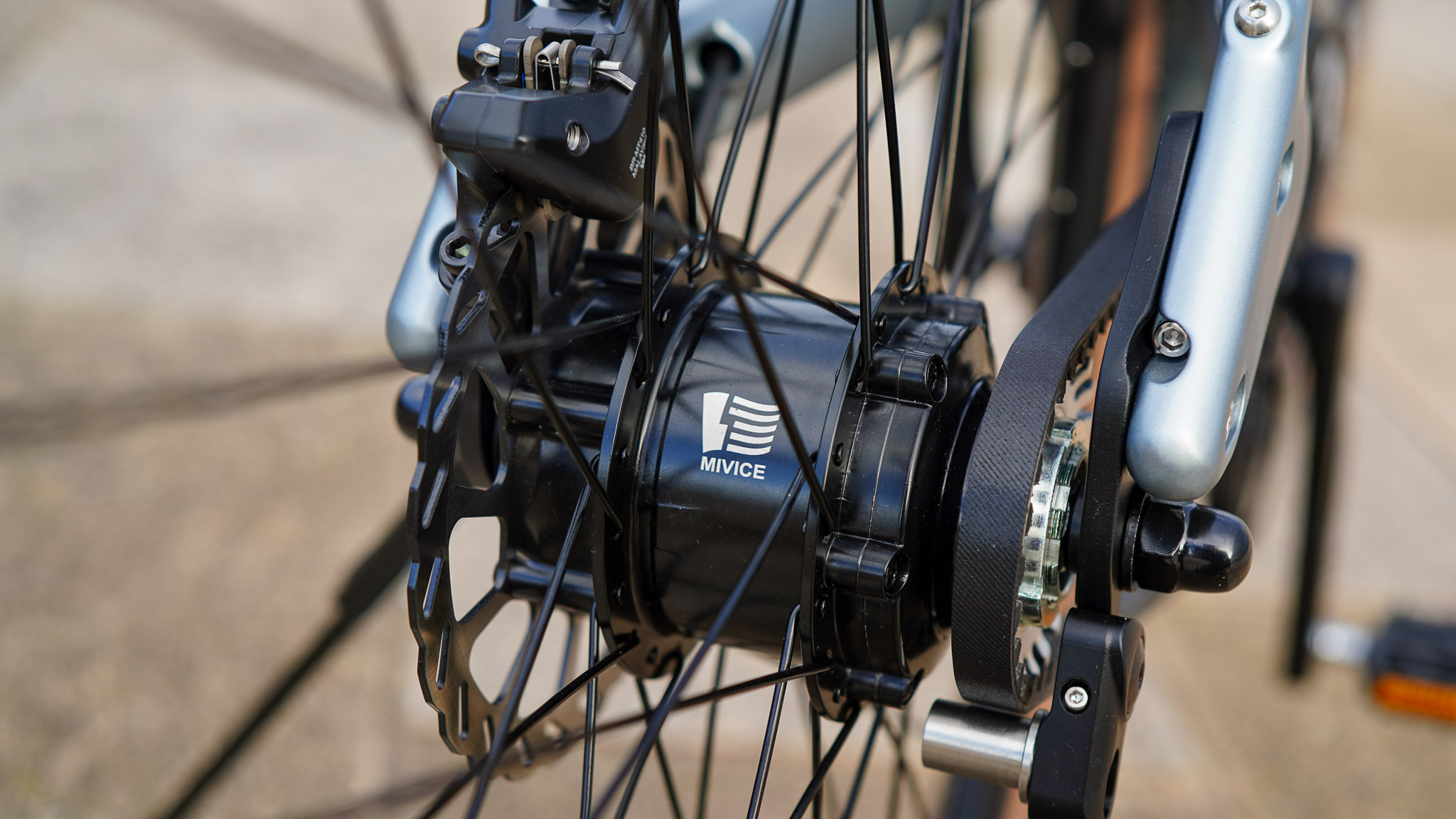
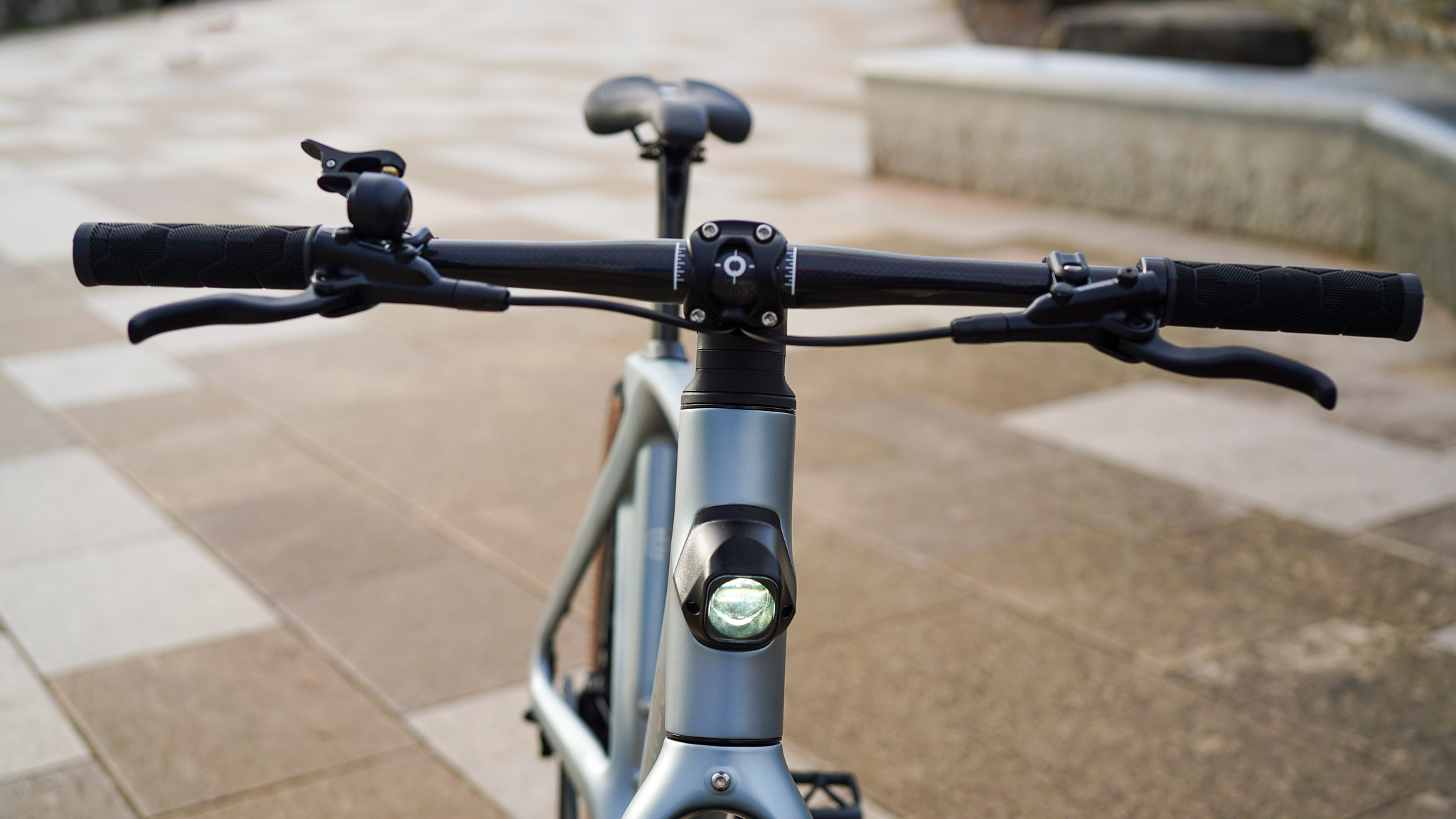
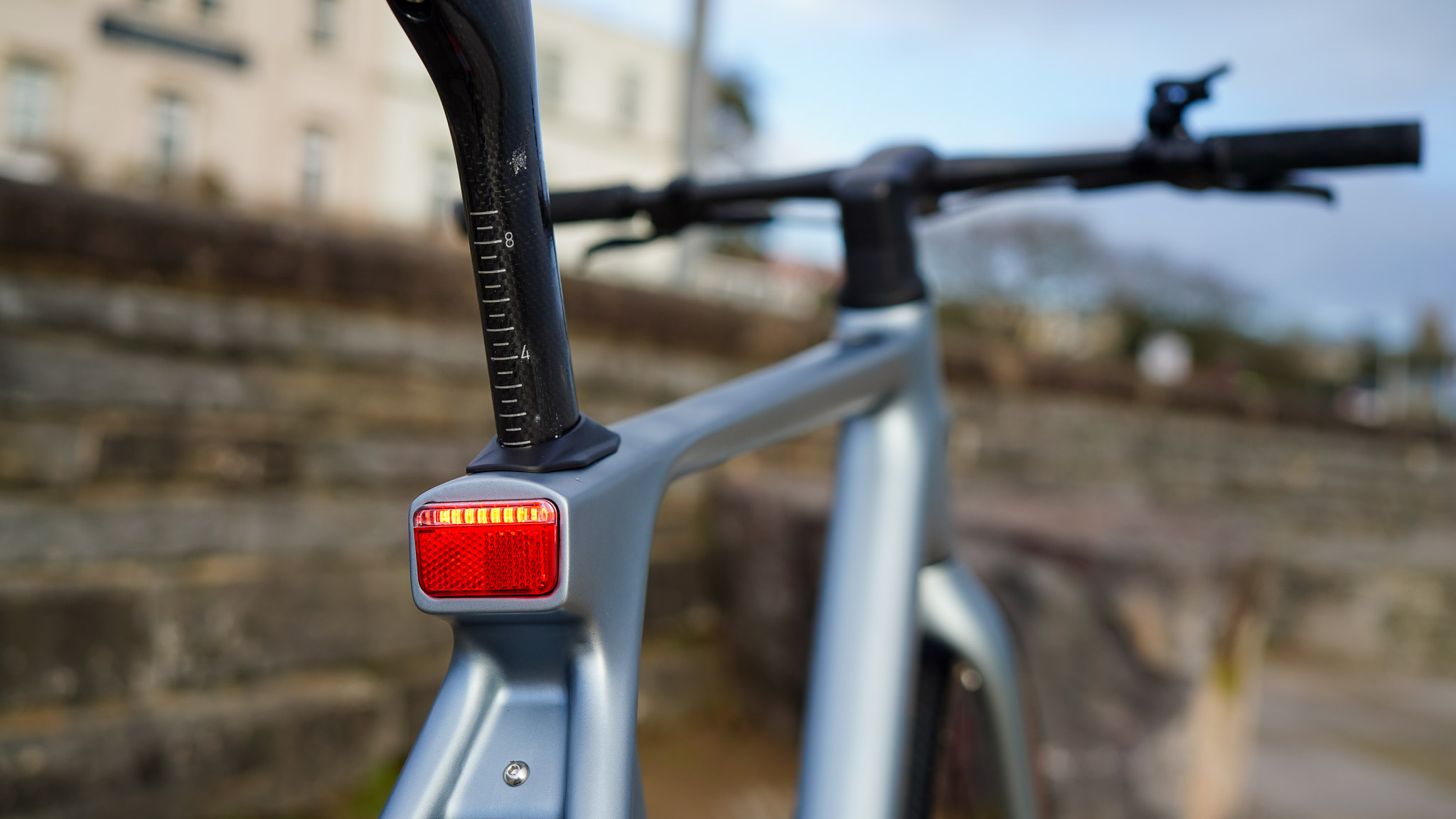
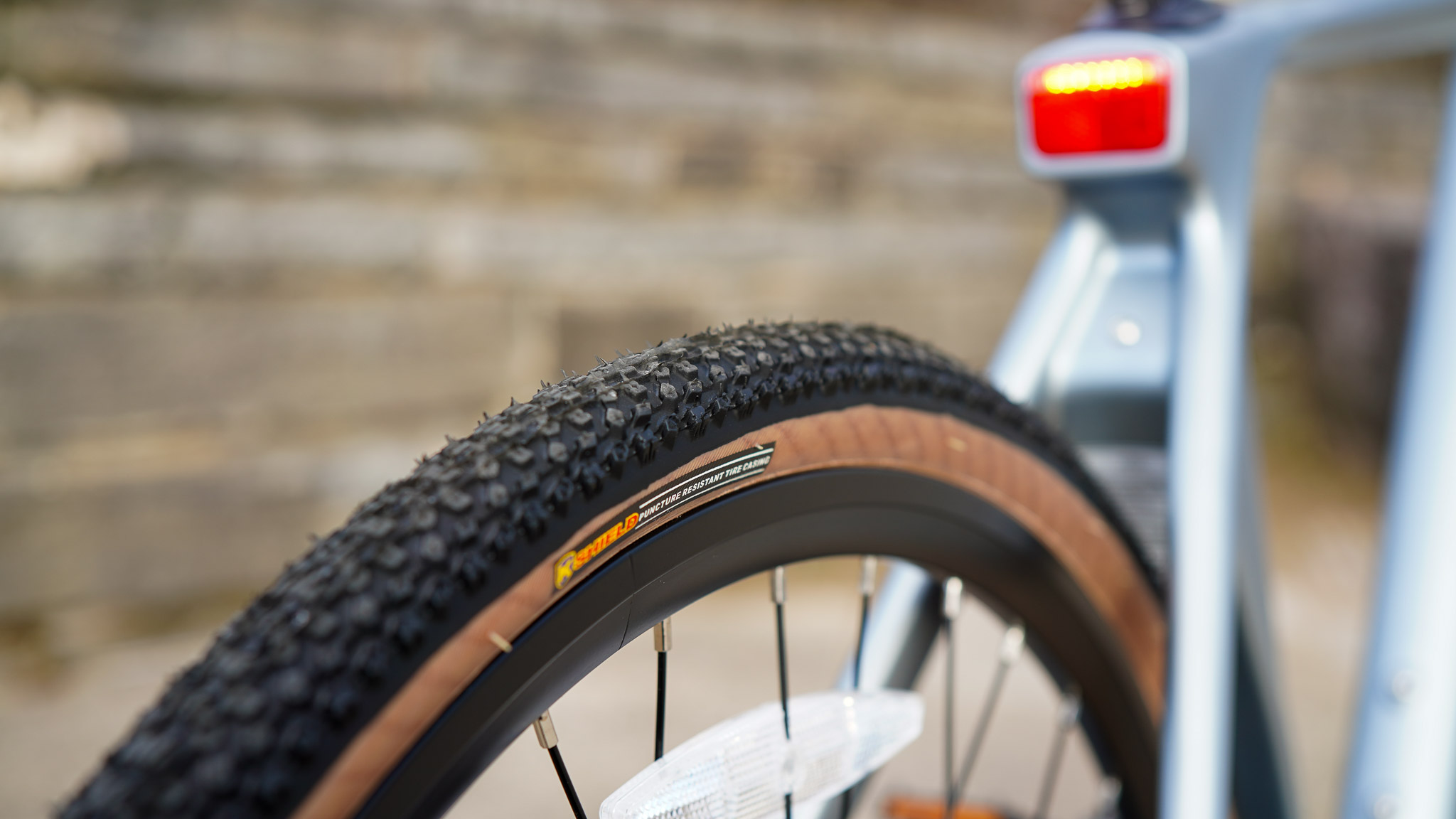
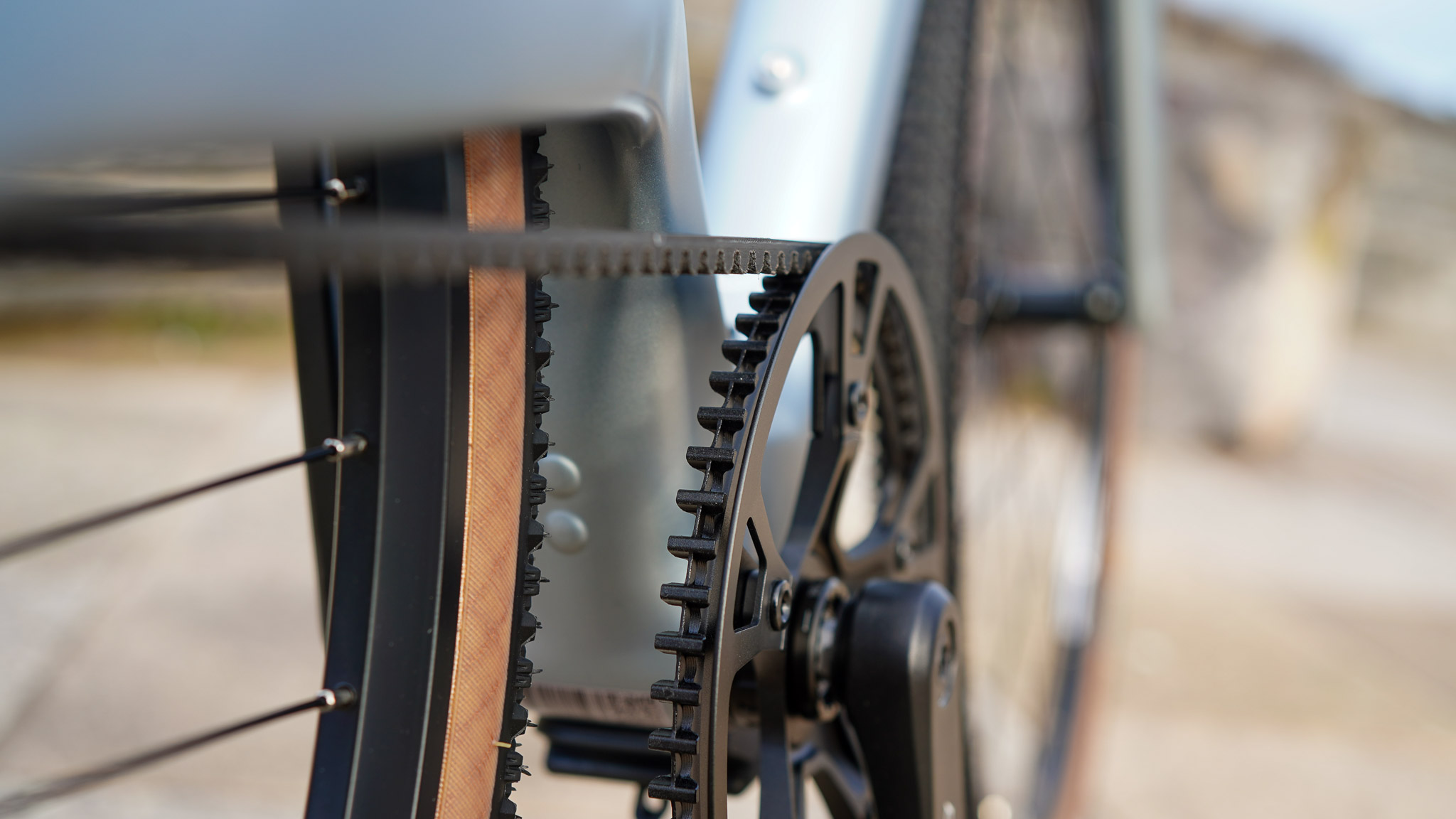
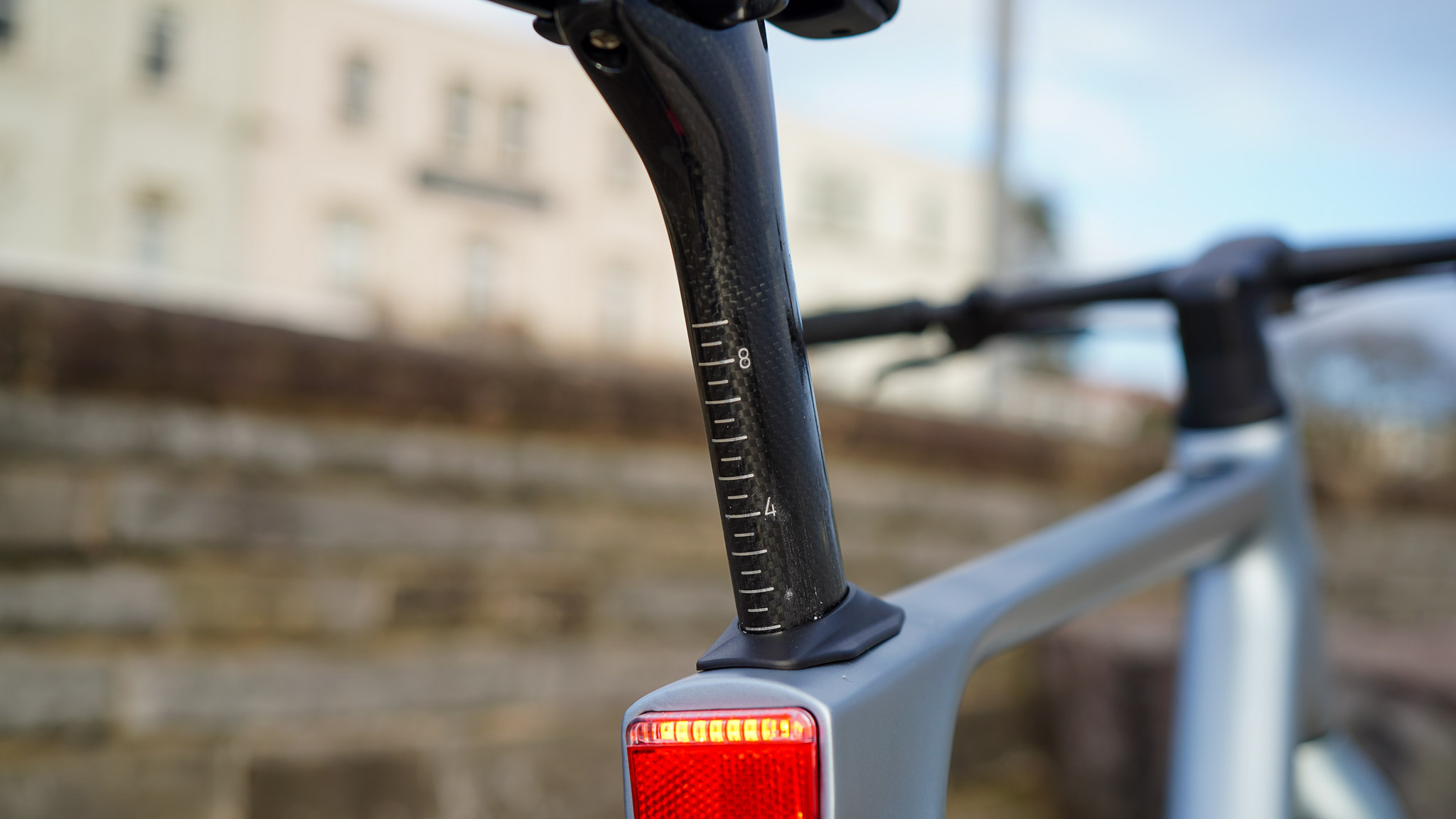
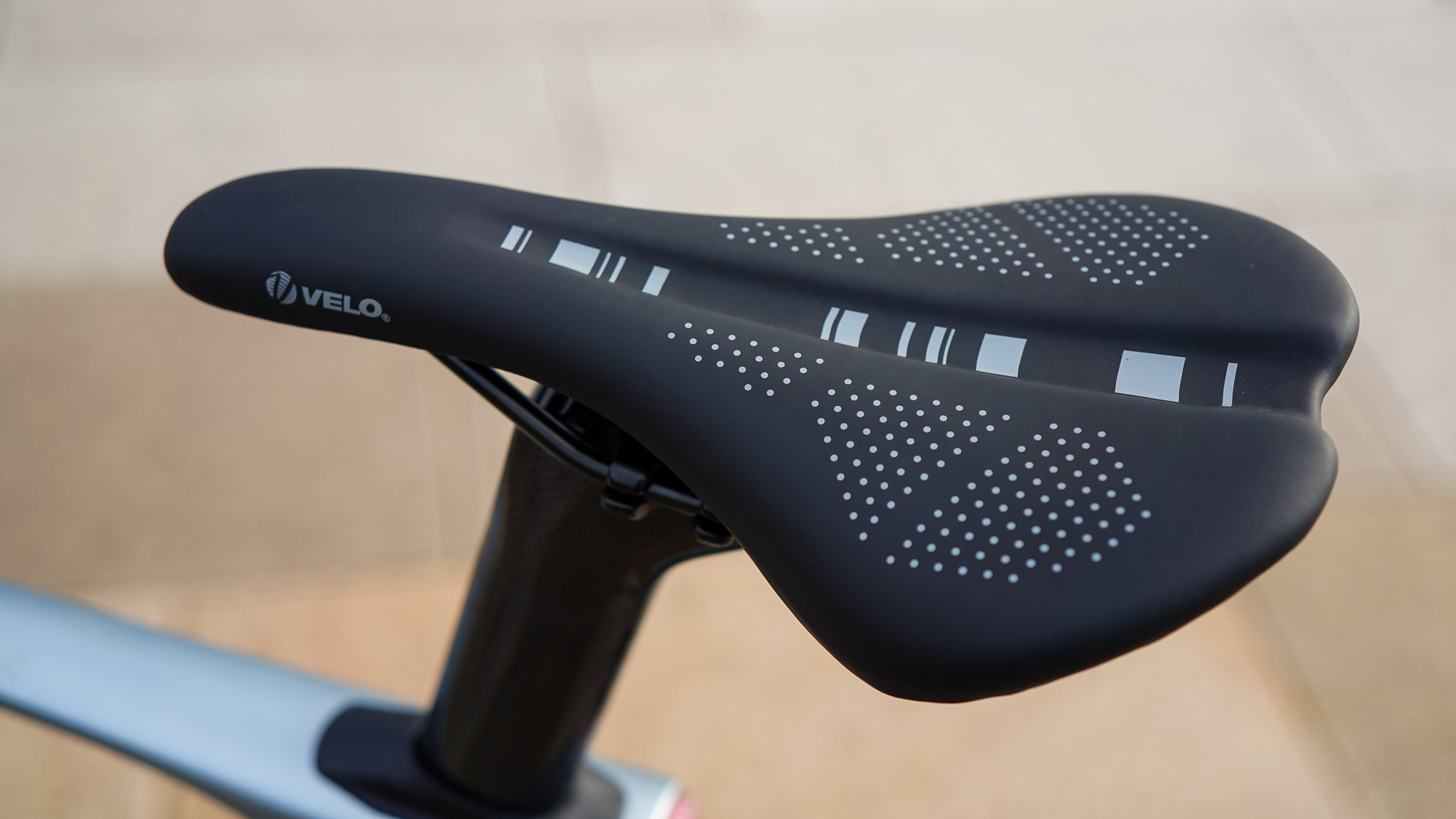

The Fiido Air is an ultra-lightweight electric bike that, from a distance, looks like a standard push bike. The integrated 208.8Wh battery sits hidden inside the slender frame, and the bike has no display, either. The two buttons are the only things that give away the electric nature of the Fiido Airt.
The IP54-rated carbon frame comes in three sizes (medium, large and extra large), with the medium weighing only 13.75 kg (approx. 30lbs). Even the seat post is carbon to keep the weight down. The cockpit is clutter-free; you won’t find any buttons, shifters or any other instruments on the handlebar.
The brand opted for a Gates Carbon Drive CDN system to further emphasise the minimalist look and feel of the Fiido Air. This low-maintenance option ensures your trousers won’t get oily and makes the e-bike look even slicker. As a result of the belt drive, the Fiido Air has one gear only, which isn’t an issue for a commuter model.
The bike is equipped with SHIMANO BR-MT410 hydraulic front and rear brakes with enough stopping power to slow down an 80kg/ 176lbs rider promptly (the rear wheel skidded slightly when I slammed the brakes at one point). The levers are calibrated and ready to go straight out of the box.
The 250W, 35NM motor has three assist modes and is paired with a rear Mivice torque sensor, which I found smooth and quiet. You only really get a low-level whirr when the assist is on. The slimline Velo saddle is comfortable enough for your riding position. The built-in lights are a nice touch.
Performance and ergonomics
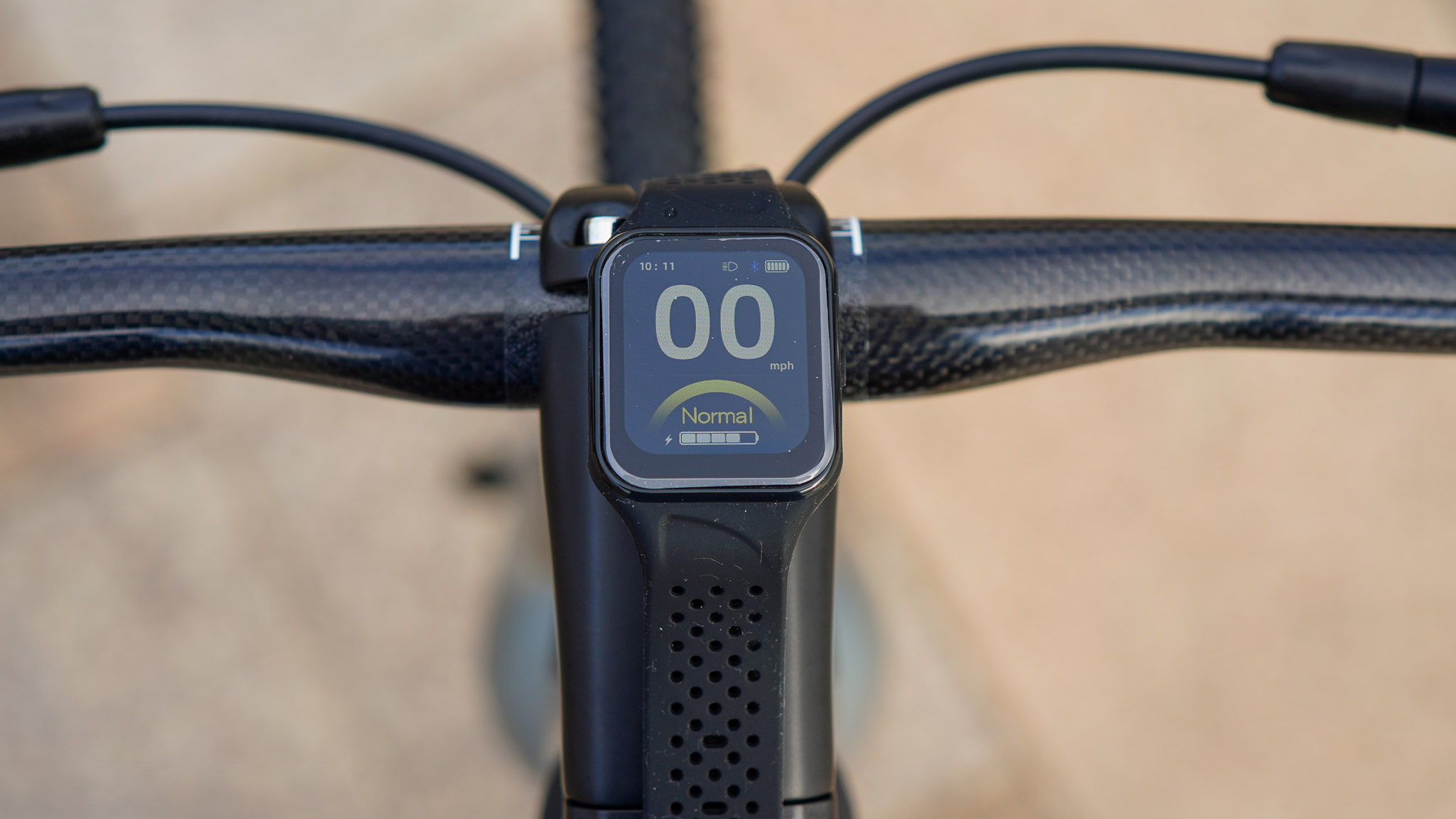
One thing is for sure: the Fiido Air rides well. The lightweight chassis is agile and feels nimble, which makes commuting fun and engaging. The built-in lights provide added visibility on the road and, in my experience, don’t sacrifice range, which is around 60-65 km (37-40mi) in Normal mode.
Now, on to the bad bits. As mentioned above, the company opted for a displayless setup, delegating this function to the Fiido Mate smartwatch. The Mate is a simple wearable that can function as a standalone smartwatch, but when paired with the Fiido Air, it serves as an external display. You can only use Fiido app to lock and unlock the bike, turn on the lights and track rides. Plus, you can also locate the bike using the app.
I have to say this: the watch display is a terrible idea. For one, you have to raise your wrist to see your stats, which means you’re letting go of the handlebar. This is inconvenient at best and dangerous at worst, especially if you’re riding in traffic.
The Mate’s raise-to-wake functionality is clunky, making things even worse. Plus, even though you can change assist modes on the watch, that would require you to let go of the handlebar completely, and I don’t have to explain how dangerous that is.
Worse still, I can’t see anyone swapping their Apple Watch for the Fiido Mate just so they can ride the Air better. I also can’t imagine people donning two watches for the same reason. And to add insult to injury, you’ll have to charge the Mate separately from the Fiido Air!
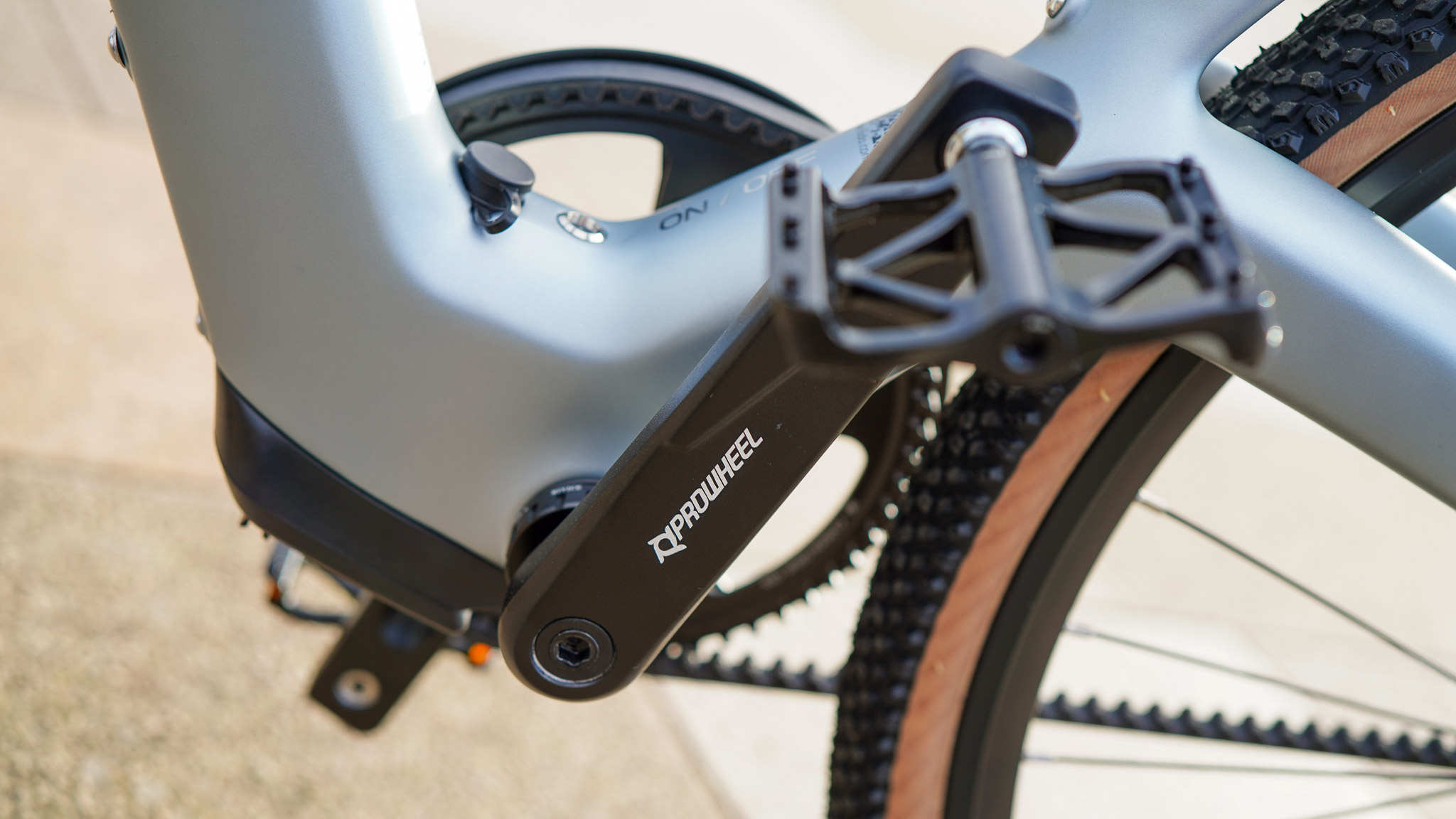
The app doesn’t help much, either. Even though the interface is clutter-free, the functionality is limited to the level that it almost makes app-control redundant. I’d expect to see a lot more details about the bike in the app, like the exact battery level and which assist mode the bike is in.
Of course, a fingerprint scanner/ button on the frame enables you to see this, but it’s hard to tell whether you’re looking at assist levels or battery status. The coloured LED ring around the button displays both, but I found using it incredibly unintuitive. The fingerprint scanner doesn’t seem to work in the first place, and the colour for no assist and Sport mode seems to be the same.
Even if I could tell how charged the battery is, it only gives you this information in brackets (e.g. 61-80%). There is a big difference between 61% and 80%, which means you might end up charging the bike more often than necessary just to be on the safe side. I wish the battery percentage would be displayed at least in the app.
An alternative solution would be to have a cradle integrated into the handlebar for the smartwatch, but then it wouldn’t be ‘minimalist’, would it? Truth be told, the argument to remove all (user-friendly) control from the bike sounds like a cost-reducing tactic rather than an aesthetic choice.
A built-in, flush LED screen wouldn’t damage the sleek image of the bike (see also: Himiway A7 Pro), but it would increase the cost of making the bike. That slender carbon frame must cost a pretty penny, which means Fiido had to find other ways to manage cost. Otherwise, the Fiido Air would have been more expensive, and I don’t think the brand is ready for a statement bike like that.
Verdict
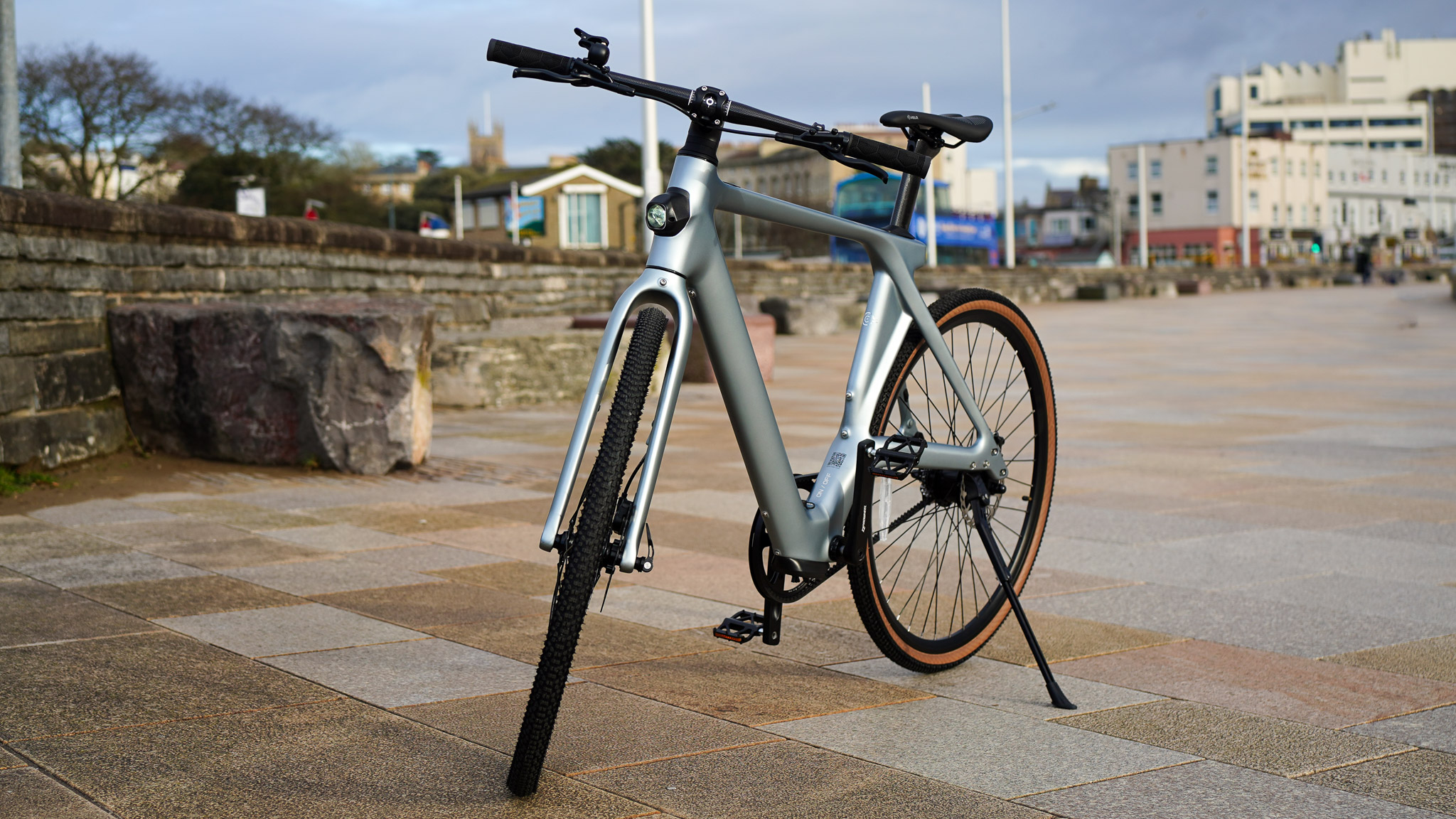
I really rooted for the Fiido Air. The bike has every right to be one of the best affordable electric bikes, but the display situation significantly hampers the riding experience (not in a good way). If you’re planning on getting the bike, make sure you add a Fiido Phone Holder to the basket, which isn’t a perfect solution, but at least you might be able to see some data where you’d expect to see them – on the handlebar.
Minor tweaks would have made all the difference with the Fiido Air, which is why I’m so sad. Adding a rocker to change assist settings would have been great. And instead of the LED ring, maybe a small LED strip with five blocks to see the battery level better. I’m not a product designer, but neither feels like a huge cost or engineering problem.
All that said, you still get a whole lot of bike for the money with the Fiido Air. I’m sure some will be swayed looking at those specs and price and won’t care about the display. I wish I could do the same.
Also consider
The Tenways Ago X is a solid alternative, particularly for those who want more power, better hill-climbing ability, and built-in usability features. Read Mark's full Tenways Ago X review.
Specialized Turbo Vado SL 5.0 is a premium hybrid e-bike that balances power, comfort, and range, making it an excellent commuter for those tackling hills. Read Duncan's full Specialized Turbo Vado SL 5.0 review.
Sign up to the T3 newsletter for smarter living straight to your inbox
Get all the latest news, reviews, deals and buying guides on gorgeous tech, home and active products from the T3 experts

Matt Kollat is a journalist and content creator who works for T3.com and its magazine counterpart as an Active Editor. His areas of expertise include wearables, drones, fitness equipment, nutrition and outdoor gear. He joined T3 in 2019. His byline appears in several publications, including Techradar and Fit&Well, and more. Matt also collaborated with other content creators (e.g. Garage Gym Reviews) and judged many awards, such as the European Specialist Sports Nutrition Alliance's ESSNawards. When he isn't working out, running or cycling, you'll find him roaming the countryside and trying out new podcasting and content creation equipment.
You must confirm your public display name before commenting
Please logout and then login again, you will then be prompted to enter your display name.
-
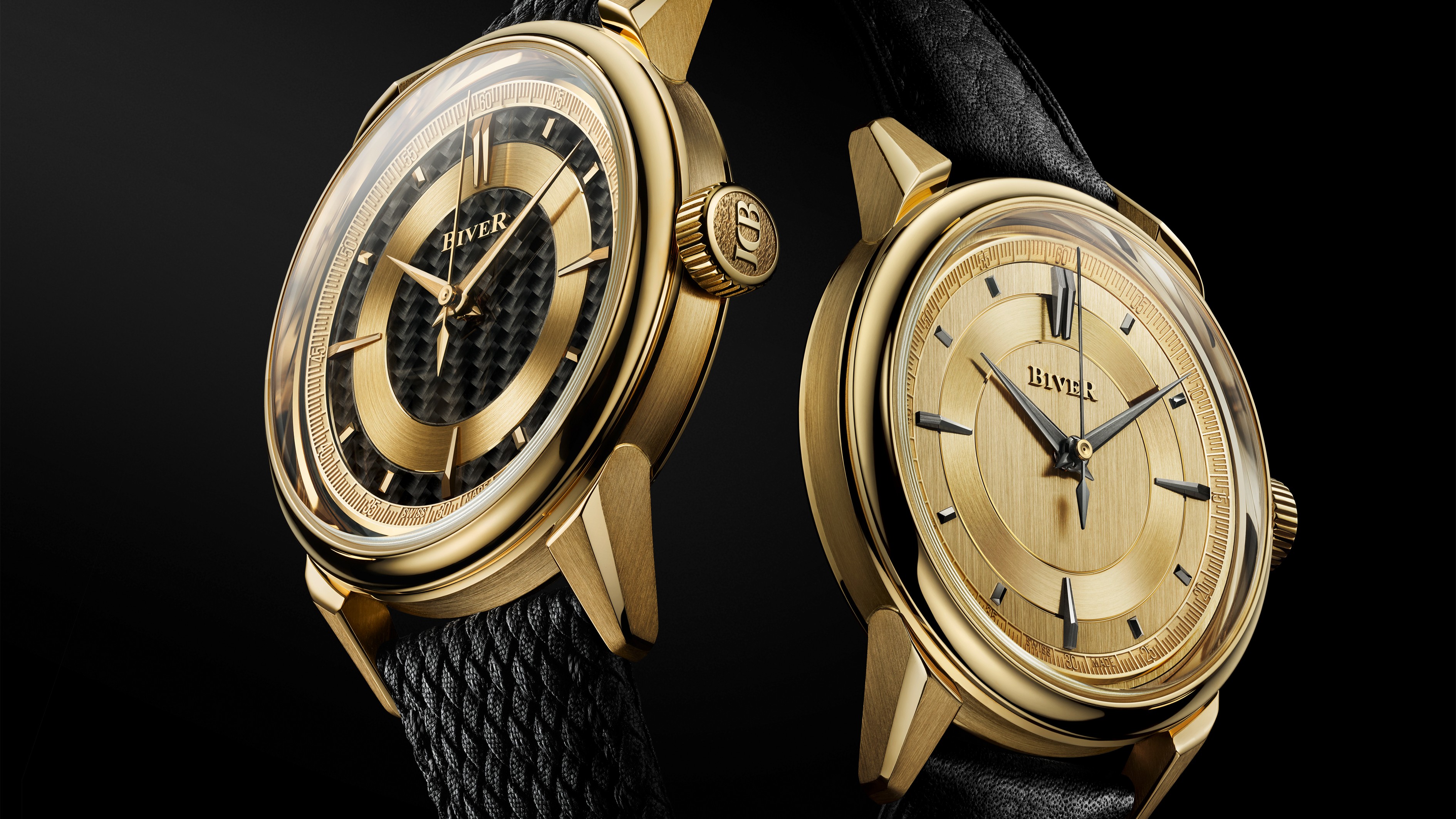 Biver adds another two Automatique models to its collection
Biver adds another two Automatique models to its collectionThese are classy additions
By Sam Cross Published
-
 Audeze’s new planar headphones promise studio-quality sound without a sky-high price
Audeze’s new planar headphones promise studio-quality sound without a sky-high priceThe new LCD-S20 closed-back headphones are Audeze's most affordable premium planar headphones yet
By Carrie Marshall Published
-
 Shark launches its smallest NeverChange Air Purifier yet – but it’s still just as powerful
Shark launches its smallest NeverChange Air Purifier yet – but it’s still just as powerfulShark reinvents its NeverChange Air Purifier in a new compact size
By Bethan Girdler-Maslen Published